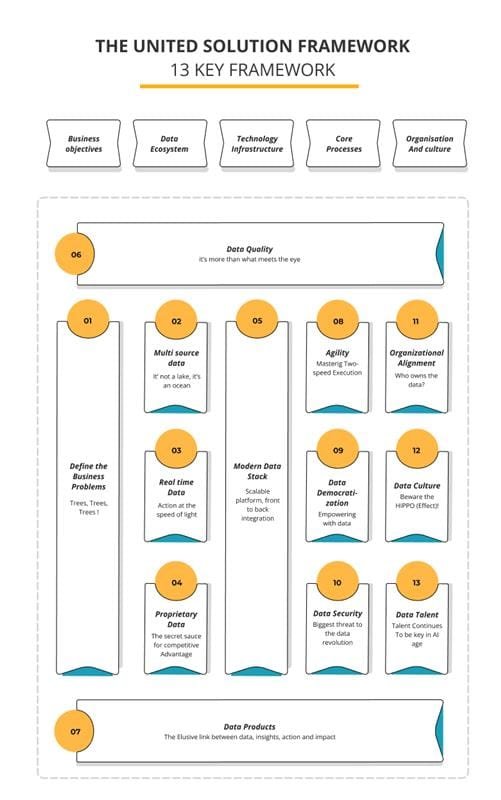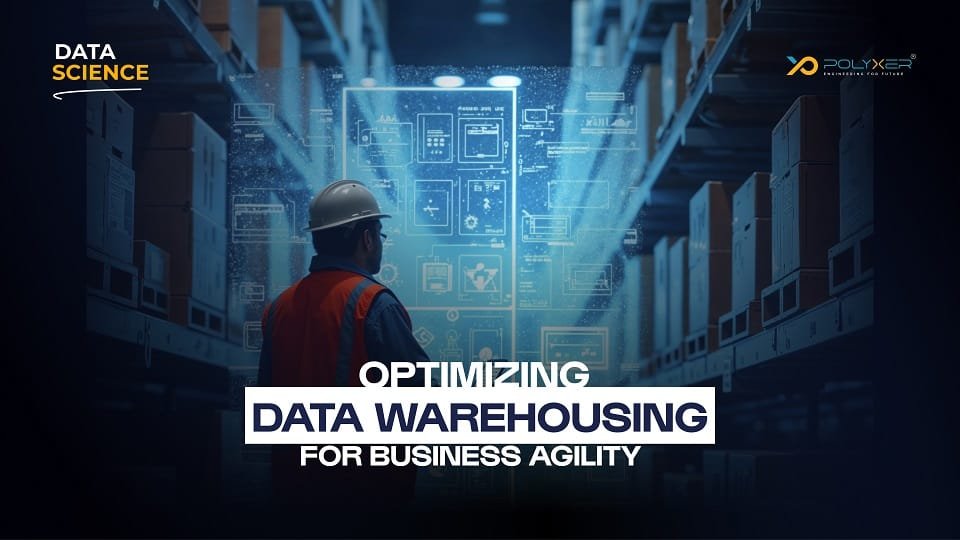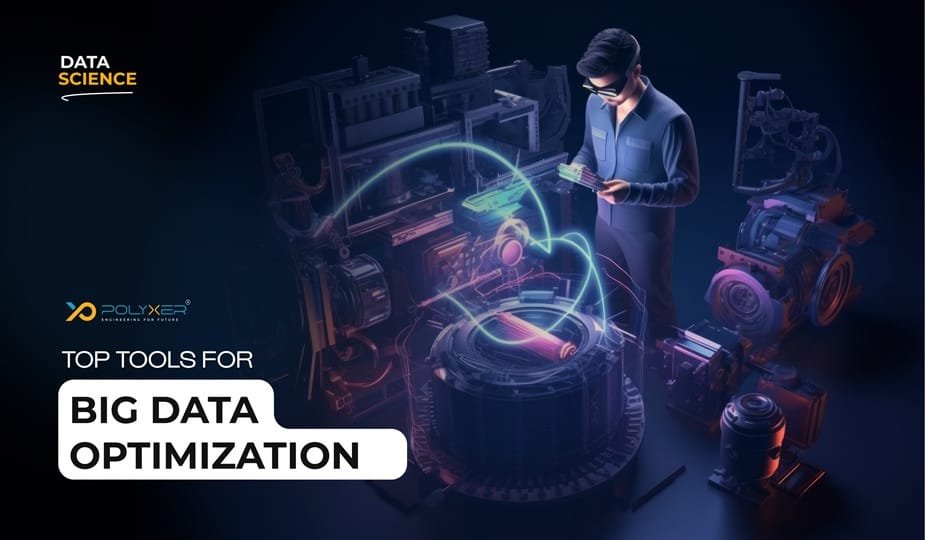
Scrubbing and Enriching Data Effectively

Zeroing On Business Problems: The Most Important Tenet
There is an exceptional surge in data generation—transforming every facet of human
existence and presenting various opportunities for organizations to extract value. Yet,
despite this abundance, a significant gap exists; that many enterprises struggle to realize
the full potential of their data. This dilemma, commonly referred to as the Data Paradox,
creates a situation where organizations are surrounded by an overwhelming deluge of data
while simultaneously facing a drought of actionable insights.
What is Data Paradox?
The term "data paradox" refers to situations where the abundance of data leads tounexpected challenges or contradictions, often complicating decision-making processes.
Despite the assumption that more data equates to better insights, organizations frequently
encounter issues that hinder effective data utilization.
Key Aspects of the Data Paradox:
Many organizations report having more data than they can manage. According to The
Hindu, a study by Forrester Consulting for Dell Technologies found that while 71% of
respondents felt they needed more data, 82% admitted to having more data than they
could handle.
Large data sets can suffer from biases that lead to inaccurate conclusions. According to
news.harvard.edu , during the COVID-19 pandemic, surveys with vast sample sizes, such
as the Delphi-Facebook study, overestimated vaccination rates due to nonresponse bias.
• Data Silos and Fragmentation
Despite the availability of vast amounts of data, its fragmentation across different
departments or systems can impede comprehensive analysis. According to The Hindu, this
siloed data environment prevents organizations from gaining holistic insights, thereby
limiting the potential benefits of their data assets.
• Quality vs. Quantity Dilemma
The focus on accumulating large volumes of data can sometimes overshadow the
importance of data quality. According to news.harvard.edu, poor-quality data can lead to
incorrect analyses and decisions which negates the advantages of having extensive data
sets.
• Ethical and Privacy Concerns
The proliferation of data collection raises significant ethical and privacy issues. As per
Smart Data Collective , organizations must navigate the delicate balance between
leveraging data for insights and respecting individual privacy rights to ensure compliance
with regulations and maintaining public trust.
Data Management in Retail Industry: Put into Perspective
This is where a robust framework helps dissect a problem logically which allows each
component to address specific challenges. When these components are combined, they
form a comprehensive guide to problem-solving.
Understanding the Unified Solution Framework
What is the Unified Solution Framework?
emphasizes defining business problems, integrating diverse data sources, building
scalable technology infrastructures, and nurturing a data-driven culture.
When Did the Need for a Framework Arise?
explosion over the last decade. Traditional methods of data management fell short of the
complexities and scale of Big Data. Hence, businesses are used to staying in a cycle of
massive investment without gaining significant insights or valuable business outcomes.
Why is the Unified Solution Framework Essential?
helps organizations overcome common pitfalls—like data silos, poor data quality, and
misalignment—while facilitating quick responses to shifting business demands. It allows
companies to transform data into actionable insights.
How Does the Unified Solution Framework Work?
definition of business objectives and narrowing down data requirements. It supports
organizations in the integration of multi-source data, leveraging both real-time and
proprietary data, and constructing a modern data stack.
Where Can the Unified Solution Framework Be Applied?
including healthcare, finance, retail, and manufacturing. Whether an organization is
beginning its data journey or seeking to optimize existing initiatives, the framework offers a
scalable and adaptable solution.
The 13 key components of Unified Solution Framework

The 13 key components of Unified Solution Framework
Fetching loads of data doesn't support productive decision-making. Organizations can
draw incorrect conclusions and make poor judgments without a clear understanding of the
business problem they aim to solve. Therefore, it's crucial for businesses to invest time
and effort to accurately define and narrow down these problems before delving into data
exploration.
One effective method to achieve this is by constructing KPI trees. KPI trees allow
organizations to break down business challenges into manageable components to identify
the vital drivers that will affect outcomes. With these drivers in mind, businesses can
pinpoint the necessary data and build streamlined data pipelines which reduce complexity
and enhance manageability of Big Data.
2. Multi-source Data
In today's data-driven world, a substantial amount of valuable data lies outside of
organizations. With newer touchpoints emerging continuously, data sources are
diversifying rapidly. Relying solely on internal data is no longer a sustainable strategy,
hence organizations must incorporate external data to drive insightful decision-making.
Integrating multiple data sources—both external and internal—can significantly enhance
the depth and quality of insights derived. However, this integration also comes up with
challenges due to the greater variety and complexity of data.
3. Real-time Data
In our fast-paced digital age, the ability to respond quickly is important. Real-time data has
emerged as a game-changer as it enables organizations to react rapidly to changing
conditions. The constant inflow of real-time data is substantial but also cause
management challenges. Organizations must develop technological infrastructures
capable of supporting a high-velocity data management value chain to ensure that data
treatment is instantaneous across all management levels.
However, it's essential to recognize that not every business problem requires real-time
data. Storing and analyzing this type of data is both laborious and costly. Organizations must, therefore, identify specific use cases that call for real-time data by weighing the
4. Proprietary Data
While much data is available externally, the unique tacit knowledge held within an
organization can create a vast difference. This knowledge, derived from years of
experience and accomplishments, can be transformed into proprietary information as it
can provide a competitive edge in a data-centric world. Capturing and codifying this tacit
knowledge fosters the development of a “knowledge cycle,” where knowledge creators
and seekers collaborate which can result in repeatable competitive advantages.
5. Modern Data Stack
As organizations identify their business problems and experience a variety of data inflows,
the need for a robust foundational platform is needed. The Modern Data Stack is crucial for
organizing data initiatives. With outdated legacy systems often unable to process
expansive and complex datasets, the need for a modern solution is also required.
The Modern Data Stack must include integrated components hosted on the cloud which
allows vast scalability and adaptability. Key technological shifts include moving from on-
premises infrastructure to the cloud which enables organizations to scale on demand. In
addition, the transition from batch processing to real-time infrastructure allows for agile
responses to shifting business needs.
6. Data Quality
Quality is essential in data initiatives. High-quality data is important to ensure reliable
decision-making and actions. Unfortunately, the complexities of big data often lead to
quality issues arising from various sources and pipelines. Organizations must adopt a
context-first approach to data quality, assessing it based on the business problem, rather
than relying on traditional dimensions of measurement.
7. Data Products
To address the challenges that come with Data Paradox, organizations must go for
"productization" of data. Data products are digital tools designed to deliver specific
outcomes and accelerate data management cycles by providing readily available solutions. By identifying repeatable data assets and transforming them into products,
8. Agility
Organizations face the daunting task of managing vast data quantities, often causing
initiatives to extend over lengthy timelines. To prevent becoming irrelevant, companies
need agility. A two-speed approach allows organizations to deliver quick solutions to
pressing business problems while simultaneously working on long-term capabilities.
9. Data Democratization
Furthermore, data must be democratized within organizations; the paradigm of limited
access to information is outdated. By breaking down data silos and fostering self-serve
capabilities, decision-makers can access the necessary insights to make informed
decisions.
10. Data Security
As data continues to flood in, security threats are becoming more advanced and frequent.
Transitioning to a zero-trust framework, where strict identity authentication is prioritized,
can help maintain security without compromising data accessibility.
11. Organizational Alignment
Identifying data ownership in a collaborative environment has become crucial which
requires organizations to establish clarity in data governance. As organizations implement
data product-centric models, they can achieve better alignment and foster collaboration
across various functions.
12. Data Culture
Organizations must work to shift away from the HiPPO (Highest Paid Person’s Opinion)
mentality and cultivate a culture that prioritizes data-driven decision-making. This involves
enhancing data literacy and normalizing data usage across all levels.
13. Data Talent
As the landscape shifts, the search for specialized data talent has become critical. The future will not only require technical skills but also problem-solving abilities and the
creativity to communicate effectively through data.
Tech Stack: Key Differences of Traditional Vs Modern Vs Data-First
Benefits of a Modern and Data-First Stack:
1. High Quality of Unified Architecture: A unified architecture streamlines the data
ecosystem by minimizing unnecessary components. High internal quality accelerates
feature delivery by reducing complexity. More tools introduce more debt, while a unified
approach enables a single management plane with a minimalistic set of modular building
blocks. These loosely coupled yet tightly integrated components support flexible data
applications, allowing users to focus on data rather than navigating fragmented systems.
root cause analysis, control over data quality, governance, and security is now achievable
through data contracts that is an agreements between producers and consumers of data
that enforce expectations without disrupting existing infrastructure.
3. Faster Time to Insights: A Data-First Stack requires a gradual start, but once the initial
phase is tackled, its value becomes clear. True to its name, it prioritizes data and metrics,
directly aligning processes with business outcomes for immediate impact.
4. Scalability: Easily adapt to growing data volumes without significant infrastructure
changes.
5. Improved Collaboration: Easier access to data for diverse teams with self-service
capabilities.
Data - First Architecture Diagram:

Data - First Architecture Diagram
Conclusion
The USF provides organizations with a structured approach to navigating the complexities
of the data landscape. By addressing both the physical and logical challenges within the
data environment, organizations can break free from the Data Paradox. By employing this
thirteen-component framework, companies can thrive in the data-first world and be well-
equipped for the evolving challenges of the AI age.
Let’s harness the power of data together at Polyxer!
This article also available here






